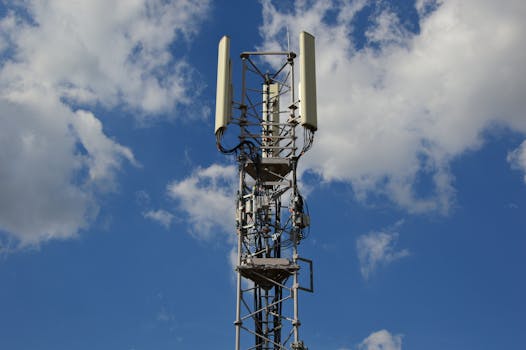
GEO Satellites: Understanding the Technology and Its Applications
GEO satellites, or Geostationary Earth Orbit satellites, are a type of satellite that orbits the Earth at an altitude of approximately 36,000 kilometers above the equator. At this altitude, the satellite’s orbital period matches the Earth’s rotational period, allowing it to remain stationary in the sky relative to a fixed point on the Earth’s surface. This unique characteristic makes GEO satellites an essential component of modern telecommunications, providing a wide range of services including television broadcasting, internet connectivity, and mobile communications.
The concept of GEO satellites was first introduced by science fiction writer Arthur C. Clarke in 1945, and the first GEO satellite, Syncom 2, was launched in 1963. Since then, the technology has evolved significantly, with advancements in materials, propulsion systems, and electronic components. Today, GEO satellites are used by many organizations, including telecommunications companies, governments, and scientific research institutions, to provide a variety of services and applications.
How GEO Satellites Work
GEO satellites work by transmitting and receiving signals to and from Earth stations, which are equipped with large antennas and receivers. The signals are transmitted to the satellite, which amplifies and re-transmits them back to Earth, allowing for communication between two distant points. The satellite’s orbital position and altitude allow it to cover a wide area, often spanning entire continents or oceans. This enables GEO satellites to provide services such as television broadcasting, internet connectivity, and mobile communications to a large number of users.
The process of transmitting and receiving signals to and from a GEO satellite involves several steps. First, the signal is transmitted from an Earth station to the satellite, where it is received and amplified. The amplified signal is then re-transmitted back to Earth, where it is received by another Earth station or a user’s device, such as a satellite phone or a television set. The signal is then decoded and processed, allowing the user to access the desired service or application.
Applications of GEO Satellites
GEO satellites have a wide range of applications, including television broadcasting, internet connectivity, mobile communications, weather forecasting, and navigation. Television broadcasting is one of the most common applications of GEO satellites, with many satellites providing direct-to-home broadcasting services to millions of users worldwide. Internet connectivity is another significant application, with GEO satellites providing broadband internet services to remote and underserved areas.
Mobile communications is another important application of GEO satellites, with many satellites providing mobile phone services to users in remote and underserved areas. Weather forecasting is also an essential application, with GEO satellites providing critical data for weather forecasting and climate monitoring. Navigation is another significant application, with GEO satellites providing positioning and timing services for aviation, maritime, and land-based navigation systems.
Benefits and Challenges of GEO Satellites
GEO satellites offer several benefits, including global coverage, high bandwidth, and reliability. They can provide services to a wide area, often spanning entire continents or oceans, making them ideal for applications such as television broadcasting and internet connectivity. GEO satellites also offer high bandwidth, allowing for the transmission of large amounts of data, and are relatively reliable, with a long lifespan and low maintenance requirements.
However, GEO satellites also face several challenges, including high launch costs, orbital congestion, and interference. The launch of a GEO satellite is a complex and expensive process, requiring significant investment and resources. Orbital congestion is another significant challenge, with many satellites competing for limited orbital slots and frequencies. Interference is also a significant issue, with signals from other satellites and terrestrial sources potentially interfering with the satellite’s operations.
In conclusion, GEO satellites are a crucial part of modern telecommunications, providing a wide range of services and applications. Their unique characteristics, including global coverage, high bandwidth, and reliability, make them ideal for applications such as television broadcasting, internet connectivity, and mobile communications. However, they also face several challenges, including high launch costs, orbital congestion, and interference, which must be addressed to ensure the continued development and deployment of these critical systems.




